As many as one in ten people will suffer with kidney stones in their lifetime with its prevalence said to be increasing. Even if you haven’t suffered with them, you will no doubt still be familiar with the term, but exactly what do these stones consist of? These hard deposits are in fact minerals which have crystalized due to their concentration in the urine being too high and there being insufficient fluid to dilute them. Whilst they are often small enough to be passed painlessly, on occasion they may become stuck in either the ureter or the urethra tubes, causing considerable pain when they do.
The most common type of kidney stones are calcium stones, with approximately 70% being formed when calcium bonds with oxalate and a further 10% being composed of calcium phosphate. Uric acid stones, which form when there is a high concentration of uric acid, constitute around 5-10% of stones. Struvite stones, generally linked to an infection, consist of calcium phosphate and ammonia constituting around 10% of all stones. The least common, a mere 1% are cystine stones, which are inherited and formed when cystine escapes into the urine.
Related: Similar to Morphine: The Best Natural Painkiller that Grows in Your Backyard
Since the correct approach to prevention and treatment varies, you might want to consider having the stone analysed to determine its exact composition; in this way you can modify your diet or treatment plan accordingly. Uric acid stones for instance favour a more acidic environment; whilst the crystallization of calcium and phosphate containing stones favour a more alkaline ph. For struvite stones the key is in flushing out the kidneys to remove bacteria.
Standard medical treatment includes pain relief or anti sickness medication. In the event the pain continues and the stones do not pass naturally, a CT scan is generally the next course of action with a view to surgical treatments or procedures to remove them. This article considers preventative measures and remedies for all but cystine stones, the rarest type. The following are all suggestions that can be tried at home before seeking medical help.
Related: The Most Powerful Natural Antibiotics Known to Mankind
Stay Hydrated
For all kidney stones, the first and most obvious thing to do is to ensure you are sufficiently hydrated by decreasing sodium intake and drinking plenty of water. In this way, the concentration of minerals in the urine is diluted. The simplest way to check this is to monitor the colour of your urine, which should be a pale straw like colour.
Chanca Piedra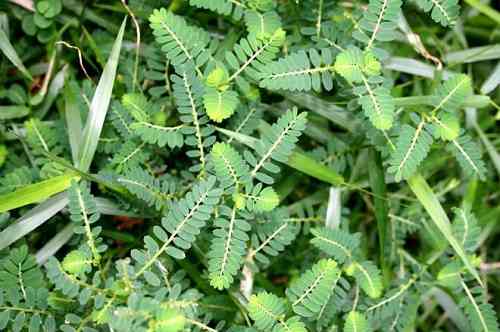
Used by generations of amazon indigenous people in the treatment of both gallstones and kidney stones, Chanca Piedra literally translates as ‘stone breaker’. It is the popular name given to Phyllanthus niruri, a small shrub-like plant in the Phyllanthus genus. Studies have shown the plant to interfere with many stages of stone formation, reducing crystals aggregation and modifying their structure and composition. It has even been shown to reduce urinary calcium in those presenting with hypercalciuria, excessive calcium in the urine. Indeed, there are many online tales of success in breaking down and passing stones with this plant.
It can be bought either in supplement form or in a tincture form, however if you are buying online be sure to get lab grade Chanca Piedra as quality will vary depending on soil quality etc. The recommended dose is up to 400 mg 3 times a day for a period of 3 months. It appears to be well tolerated generally, however as with the ingestion of any herb check to see if there are any possible interactions. It is thought for instance that it may affect blood sugar levels and thus not suitable for those with diabetes.
Lemon Juice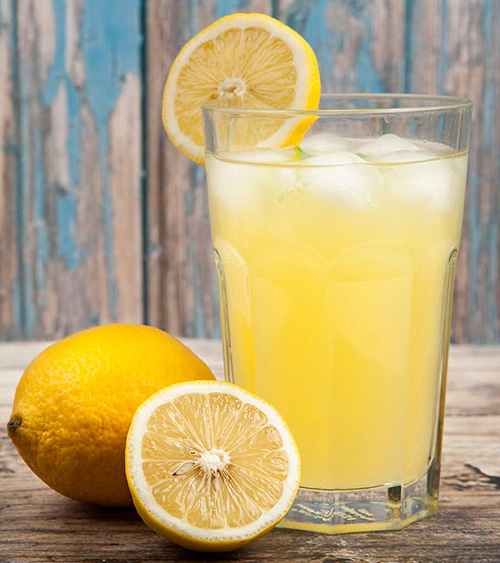
Lemons contain plenty of natural citrate, a known inhibitor of calcium stone crystallization in urine. Potassium citrate is in fact, a standard treatment prescribed by doctors for those prone to calcium stones. The effectiveness of citrate is said to be due to the fact that it binds with calcium in urine, however it may also actually prevent crystals from binding together and therefore getting larger. Citrate is also good news for those with uric acid stones as these stones favor an acidic environment and citrate acts to raise ph., thus lowering acidity in urine.
Clinical trials are on-going but preliminary findings suggest that drinking 1/2 cup of concentrated lemon juice a day would provide a sufficient daily dose of citrate. This can be diluted with 7 cups of water and drank throughout the day. Sufferers on online forums have also reported great results with this remedy. Other citric juices, such as cranberry, whilst high in citrate have been deemed less beneficial due to having a higher oxalate content.
Pomegranate Juice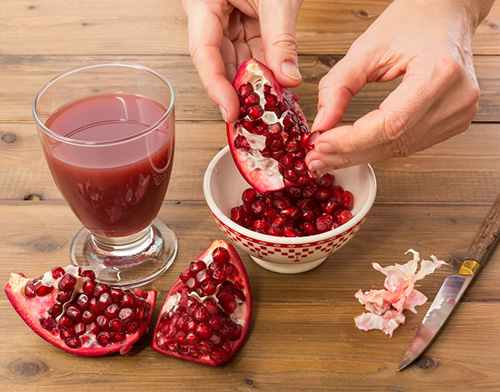
As well as pomegranates having an antioxidant activity three times higher than that of red wine and green tea, drinking fresh pomegranate juice has also been shown to be beneficial in the treatment of kidney stones due to increasing citrate levels in urine. In a study on rats whereby calcium oxalate deposits were induced by ethylene glycol, the group given pomegranate juice did not develop crystals. This study concluded that pomegranate juice has a protective effect on calcium oxalate crystals in the renal tubes. Fresh pomegranates in this study were washed, crushed and squeezed.
Diet
Contrary to what you might think, reducing calcium intake is not the answer for calcium stones as this can cause oxalate levels to rise. Conversely, when there is sufficient calcium in your diet, calcium bonds with oxalate in the intestine before it reaches your urine.
It is best to ensure adequate intake of calcium through food since the supplement form itself has been linked to kidney stones. Standard advice recommends moderating your intake of oxalate rich foods (which include beetroot, asparagus, rhubarb, chocolate, berries, leeks, parsley, celery, almonds, peanuts and cashew nuts, soy products and grains, such as oatmeal, wheat germ and whole-wheat). It is also advisable to reduce the amount of animal protein in your diet since it lowers citrate excretion and increases calcium and in particular uric acid excretion.
Uva Ursi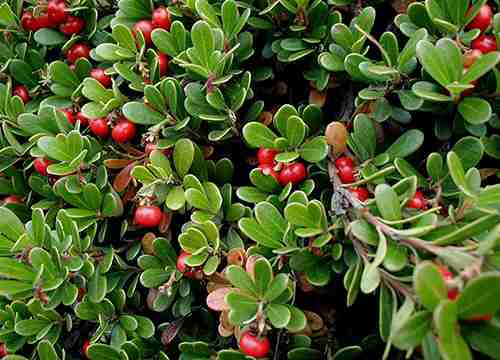
Uva ursi, also known as bears grape because of its popularity with bears, is a plant which grows in cooler climates; the leaves of which are used to make medicine. Although more research is needed to confirm its effectiveness for kidney stones, this common folk remedy has long been recognised as being beneficial for kidney and urinary health, being a common treatment for bladder infections before antibiotics. The plant, which is a genus of Arctostaphylos, contains a glycoside, arbutin which not only not only has an antiseptic effect neutralising bacteria but also a diuretic effect clearing away harmful substances and encouraging the passing of crystals. It is also believed that the tannins in the leaves of Uva ursi help to fight infection and reduce inflammation.
Uva ursi is available in supplement and tincture form in health food stockists. You can also drink Uva ursi tea by simmering a table spoon of the dried leaves in cups of boiling water for 30-40 minutes twice daily. It is not recommended for children. The recommended dose for urinary health depends on the arbutin content, so check with your supplier. It is not recommended for everyone, for instance it is not suitable for children, pregnant women or those with liver disease. Again, check for contraindications before supplementing with Uva Ursi.
Dandelion Extract, Tea, or Juice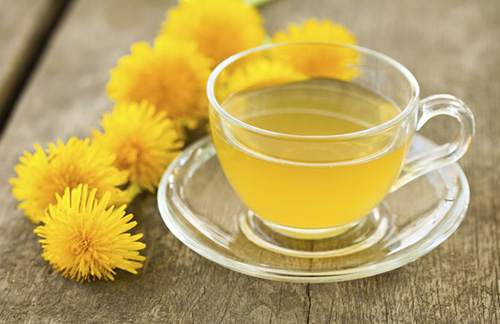
Herbalists use dandelion leaves to improve kidney function. It can also be helpful in the treatment and prevention of kidney stones as it increases the amount of urine and encourages elimination of fluid from the body, thereby facilitating the passing of the stones. By diluting the urine it may also prevent stone formation. Learn how to make survival dandelion jelly with 2 years shelf life.
Wheatgrass Juice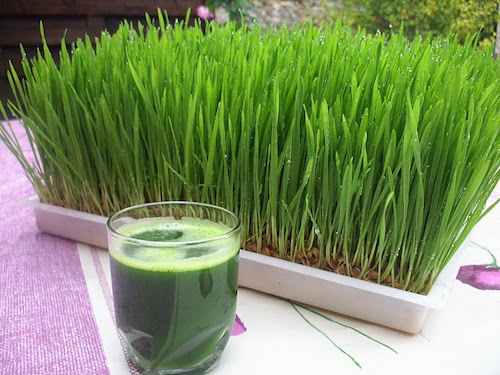
Wheatgrass Juice is one of the best sources of living chlorophyll available and since chlorophyll is antibacterial, having a detoxifying effect on the body, it is reported to be beneficial for cleansing the kidneys. In addition to which it also acts as a diuretic, helping to flush out the kidneys and encourage the passing of stones.
Drinking wheatgrass juice on an empty stomach is recommended otherwise it can induce nausea. Wait 30 minutes before eating. 1fl oz a day is recommended at the beginning, increasing it to 2oz a day after a week. It can be used in juicing.
Celery Juice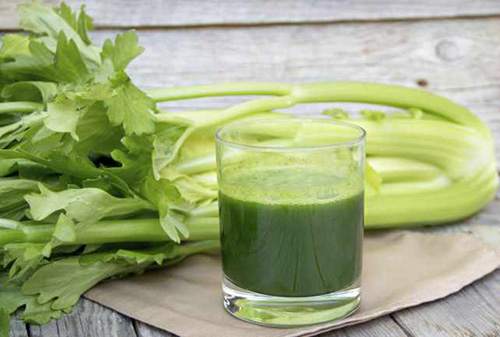
Celery juice is reported to clear away toxins and be generally beneficial for kidney cleansing, helping to dilute the mineral concentration and act as diuretic in order to help pass any stones. However, due to it being relatively high in oxalate, it may not be advisable in the treatment of calcium oxalate stones. In any case celery seed extract is reported to be good for removing excess uric acid and thus beneficial for those suffering from the less common uric acid stones.
Bicarbonate of Soda 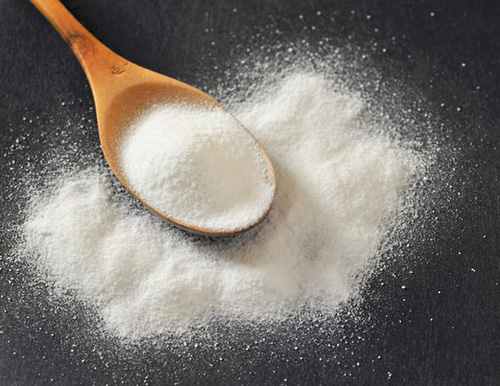
According to Michigan Medicine, University of Michigan, bicarbonate of soda is useful in not only the prevention of stones but also in helping to break them down. This applies solely to uric acid stones, which makes sense since these types of stones thrive in an acidic environment and bicarbonate of soda would make the urine more alkaline. Simply mix a tablespoon in a large glass of water and repeat 2-3 times daily until you find relief. You can also check these 112 uses of baking soda (WWII Series).
You may also like:
 Potassium Permanganate: Why You Need It in Your Survival Kit?
Potassium Permanganate: Why You Need It in Your Survival Kit?
Strange Method Makes Food Last for 2 Years Without Refrigeration (video)
23 Survival Uses for Honey that You Didn’t Know About
The Ultimate Survival Tree That Grows on Almost Every Street in America

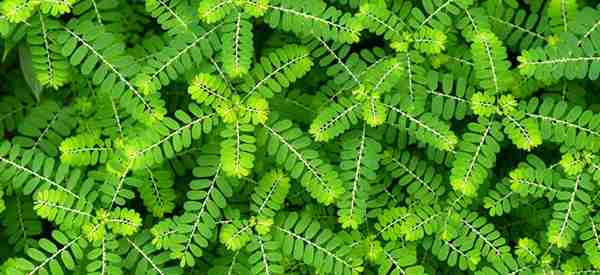













Chanca Piedra is very good. Hydration also. Walking a flight of stairs a few time a day definitely helps. I have no experience with the other remedies mentioned, but do not overlook Inositol, a simple sugar that is available online inexpensively and in most natural food stores.Taking a level teaspoon 2-4 times a day at the first sign of a kidney stone works fast on my calcium-based stones, sometimes in less than 15 minutes. (Not a misprint.) Combine it with Chanca Piedra, and you might be shocked. Inositol also has beneficial effects on prostate-related issues. I am not an M.D., but have never had to take a painkiller after discovering Inositol, and much later, Chanca Piedra. The stones just disappear.
I found out I have gallstones, this year. It’s not fun, have had some painful attacks lasting up to 5 hours. I also have read apple cider vinegar, and also mint.. I bought acv tablets at vitamin world because I cant drink it ! Thank you for the tips, will try some of these. Also purchased a product called rowachol and haven’t had any flare-ups.
Hey Gallstone-FREE Lady, We got rid of everyone’s stones with an Olive Oil & Grapefruit Juice liver flush. I’m sure you can find the instructions online/YouTube. It works, its not fun, but its totally effective. Good Luck!
NOTE that ANY grapefruit product ENHANCES the activity of STATINS, which CAN CAUSE VERY SERIOUS DAMAGE to the Liver!!! IF you take any of the statins, be sure to clear the use of any grapefruit product with the Doctor prescribing the statin!
SkiGpsy – I’ve heard good things about olive oil, but I would be careful about grapefruit juice if you have kidney stones. That juice seems to trigger the release of kidney stones, which can cause extreme pain if they are too large to pass easily. (Been there done that.) That’s why I now try to stay well hydrated and take a small maintenance dose of inositol and/or chanca piedra daily. If I felt a craving for grapefruit juice, which has happened a number of times, I would up my dosage well beyond preventive maintenance level.
I’ve not had experience with kidney stones, only gallbladder.
Its interesting that Grapefruit juice triggers the release of kidney stones and that you have stones and your body craves it. I will remember that if anyone starts craving Grapefruit juice, we’ll look into kidney stones.
BTW, I have no experience with gallstones, but chanca piedra is supposed to melt them as effectively as it does kidney stones. No sense suffering pain if you don’t have to.
Also, chanca piedra is available online in bulk 1 lb bags. I don’t know how much tea equals the dosage of the 800mg NaturalisimoLife tablets I use, but my guess is not a lot of tea.
I’ve passed a few stones over the past decade.
A client of mine had relayed to me that her husband also had stones on occasion, and that he drank ACV diluted with water, and sweetened with stevia. I tried it, and it was tolerable, and I took it maybe twice a week. Eventually I passed another stone – at least they were small enough, and after that last one, I increased it to 40 mL/day, and now drink it 5-6 days a week.
By now, I’m used to the sour taste, and in the summer, it’s not bad since it quenches the thirst a bit. In winter, I heat it up.
The only food I’ve given up are nuts, because of the oxalates it contains – I used to munch on them a lot during the week. There are other foods I should give up, but I just won’t. That’s why I drink ACV.
Try soaking raw nuts overnite, it completely changes the nutritional profile (in preparation for the tree sprout), plus phytic acid is gone!
The broth from cooked kidney beans has been used to improve overall urinary and kidney health. It also helps dissolve and flush out the stones. Simply strain the liquid from cooked beans and drink a few glasses throughout the day.
One of my friend is suffering from kidney stone pain from last 6 months. He is taking medical treatment for that but the problem is still there. Today I have found this post on internet where everything is explained about kidney stone. I hope this post will help him to get rid of the problem.
Thanks
There is no such thing as “animal protein”. The source of proteins is not recognized by the body. I suspect that the source of that “conventional wisdom” is an ideological vegetarian.
No problems here. Try a different browser like Opera as a check.
BTW, I gave 1600 mg of Chanca Piedra to a friend with back pain. His MD told him he had a lot of small kidney stones building. He started passing them in 15 minutes, like black sand. Can’s say why, only that it works.** Note: I am not an MD.**
BTW, Chanca Piedra and Joe Pye Weed also seem to help with gout, which is usually a buildup of sharp calcium nodules in toe joints. _Tart_ cherry juice (comes in a concentrate) from the grocery store is also well-known for gout, which I am prone to. Also, drink more water than you are used to drinking. It Helps flush the calcium.